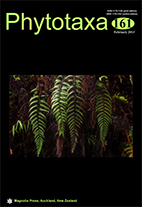Abstract
Two strains of Nostoc commune have been isolated from the soils of two different rice-growing agro-ecosystems, viz. flat and terrace paddy fields of Dima Hasao district of the state of Assam, North-East India. Phenotypic characterization was made for both the strains and their growth, pigments (chlorophyll a, total carotenoid content and phycobiliproteins) and biochemical properties (total carbohydrate and soluble proteins) were studied. Phylogenetic comparison was made utilizing 16S rRNA gene sequences. Both strains presented higher phycocyanin content than other biliprotein pigments. Total carotenoid content (TCC) was higher in the strain isolated from flat paddy field, while the isolate from terrace paddy field was richer in phycobiliproteins. 16S rRNA gene sequences of the isolated N. commune strains were compared with available sequences of other strains of Nostoc and Anabaena from various geographical locations. Gene sequences were clustered according to their geographical origin, which also reflected the disputed taxonomic position of the Nostocacean genera Nostoc and Anabaena.

